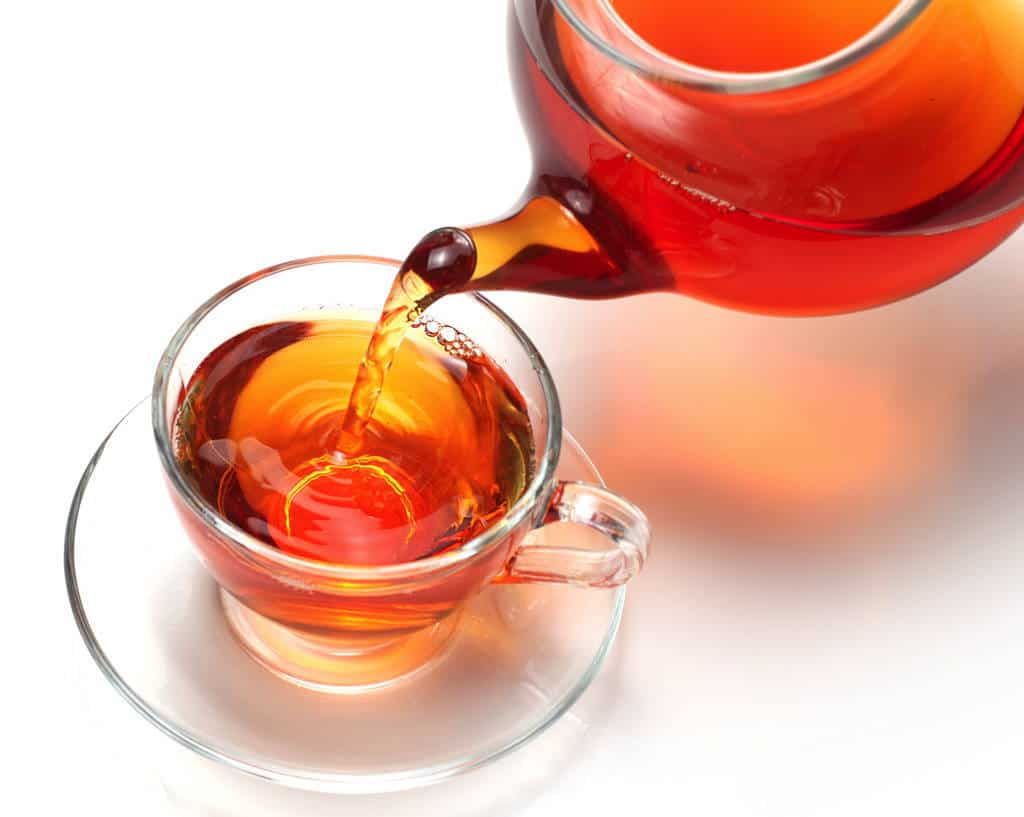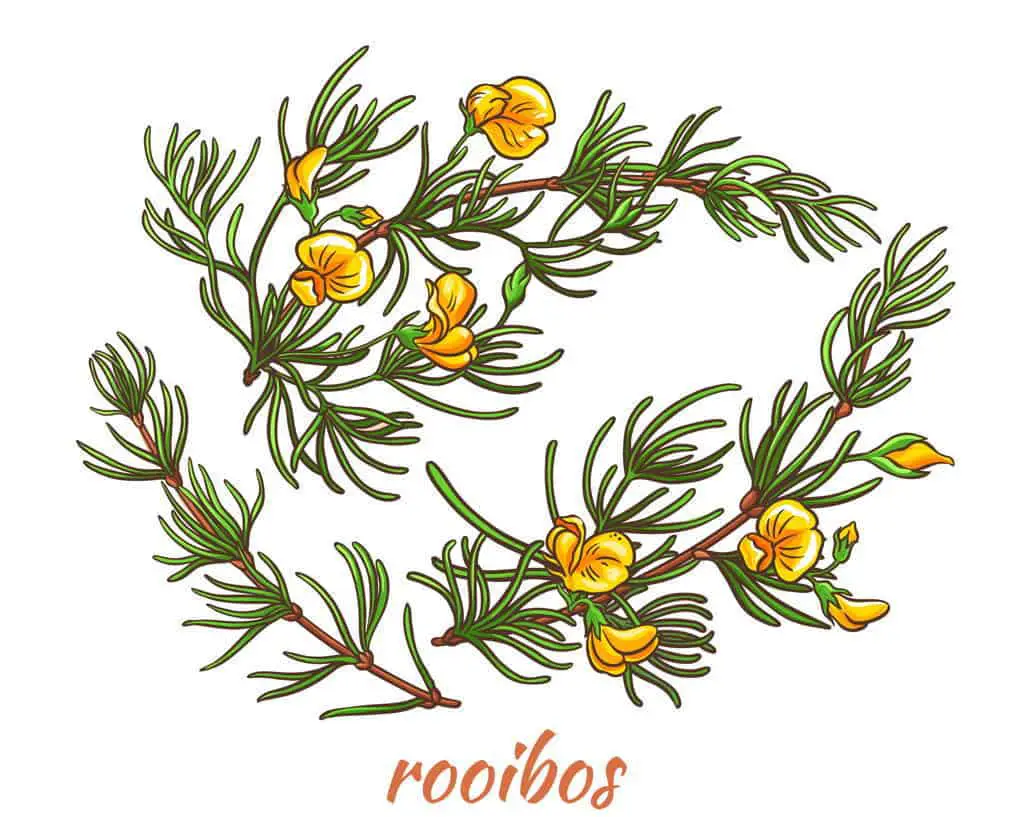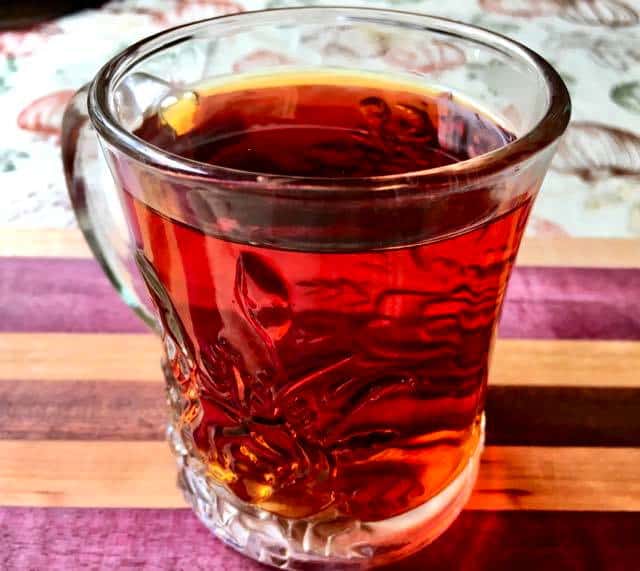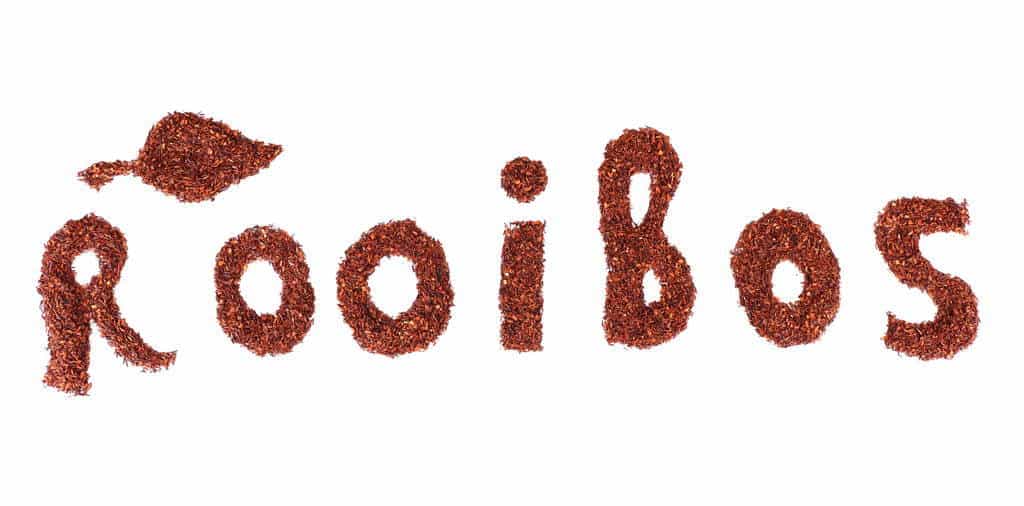
Health benefits of tea and the power of subtraction
Often times it’s not what we put into our bodies that makes us happy, fit, and well, but what we take away.
Indeed, part of the health-giving power of tea is that tea aids subtraction: by drinking tea we can subtract from our lives many substances or habits that are harmful to our well-being.
To see why this is so, consider this example.
Sugar and caffeine, the constant companions
Let’s say that you have a sweet tooth that you indulge in every beverage. Perhaps you begin your day with a mound of sugar in your coffee; in the afternoon, you have a super-sweet soda as a pick-me-up. Then later in the evening, before your workout, you gulp down a sugar-saturated “energy” drink.
You are aware that the consumption of large amounts of sugar is undesirable and you would like to significantly reduce your daily intake.
Easier said than done.
The problem is that you’re not only hooked on the added sugars but you’ve also been snared by the caffeine in each of your beverages. Quitting one bad habit is hard enough but quitting sugar and caffeine at the same time is a difficult slog.
What you need in order to ease you off these dependencies is a drink that gently subtracts both addictive molecules while at the same time providing similar taste sensations as your sugary caffeine drinks.
What kind of drink, you protest, can free you from your molecular companions and does such a beverage even exist?
Mind the bushes, there’s a special tea in there!
Yes, such a beverage does exist and it’s been hiding in the bush, so to speak.
The name says it all: rooibos, pronounced “roy-ee-boss,” the Afrikaans word for “red bush.” And the cousin of rooibos, honeybush, which is the English word for, well, honeybush.
Together, teas made from each of these plants are called the bush teas. My goal today is to explain in detail what these special teas are, why you should drink more of them, and where you can find excellent buys online.
If you would like to jump ahead to my recommendations for bush teas, please click on the navigation button below. Otherwise, continue reading to learn more about this amazing beverage.
Table of Contents
- Health benefits of tea and the power of subtraction
- Sugar and caffeine, the constant companions
- Mind the bushes, there’s a special tea in there!
- Discovering bush teas
- What are rooibos and honeybush?
- How bush teas are manufactured
- Summary: benefits of rooibos and honeybush tea
- Are there side-effects to rooibos and honeybush teas?
- Best rooibos and honeybush teas: our recommendations
- #1. Best value in Honeybush tea: organic, loose-leaf Honeybush by Davidson’s Organics
- #2. Best farm-to-cup bush tea: Cederberg Organic Red Rooibos
- #3. Best blend of vanilla and rooibos: Equal Exchange Vanilla Rooibos
- #4. Most community-spirited tea importer: My Red Tea Organic Rooibos Tea
- #5. Best budget-friendly bush tea: Freshpak Red Rooibos
- #6. More herbal combos than you thought possible: Positively Tea Co. Rooibos Tea Blends
- Putting it together: an overview of our recommendations
- The Bottom Line: Tea and Health

Discovering bush teas
Cultivated and manufactured in South Africa as a favorite alternative to imported teas, bush teas are naturally caffeine-free and have no fructose sugars.
And yet bush teas pack flavor, mouthfeel, and natural, non-sugary sweetness, three qualities that we seek in nearly all beverages that aren’t merely plain water.
In many ways, the bush teas are wonder teas that may be the solution to your desire to kick the caffeine and sugar habits while still providing the comfort and satisfaction of a hot beverage.
What are rooibos and honeybush?
Rooibos and honeybush are both members of the legume family of plants. Consequently, these tea legumes have very different cultivation needs from Camellia sinensis, the plant species from which all true teas such as black, green, and oolong teas are made.
In fact, rooibos and honeybush are so tightly dependent on the unique features of their native habitat—the arid fynbos ecoregion of South Africa—that commercial farming of bush tea outside of this habitat has proved nearly impossible.
Tea camellia farms, in contrast, have been established across a wide swath of tropical and subtropical regions of the world.
Such geographically limited growth requirements for bush tea species give new meaning to the expression sourced at the origin. In other words, if it’s bush tea that you’re drinking then you can be confident that it has been grown and processed within or very close to the fynbos ecoregion.

How bush teas are manufactured
At maturity, rooibos plants resemble a witch’s broom with the handle buried in the ground and the thin, wispy stems pointing to the sky.
Honeybush is similar in form but has more of a bottle-brush structure to its upright stems.
The valuable materials for harvest are the stems and diminutive leaves. Farmworkers cut the bunch of stems at the base, leaving the roots in place to grow a new broom in the next season.
After harvest, stem and leaf are immediately transported to a nearby processing facility where the material is first chopped into very small pieces. The next step is to direct the chopped material to one of two critical procedures.

Green or red bush teas: the oxidation difference
Oxidation of chopped plant material is a reactive, enzymatic process that radically changes the character of finished bush tea.
For instance, if the tea maker is crafting an unoxidized bush tea, then chopped material goes directly to an outdoor courtyard where it is spread out to dry in the hot summer sun. Relatively little biochemical change occurs in dried bush tea because plant cells must contain water in order for oxidation to proceed. No water, no oxidation.
Unoxidized teas are called “green” because many of the plant compounds present in the fresh-harvested material are preserved in the finished tea. This is important because many of the supposed health-promoting compounds such as antioxidants and vitamin C are preserved in relatively high concentrations in green bush teas.
Red tea has to sweat
There is a different path, however, for rooibos or honeybush that is finished as a red bush tea.
Here the chopped material is mechanically bruised in order to release and to mix phytonutrients and oxidation enzymes that occur naturally within the stem and leaf.
Soon after bruising, plant material is laid out in long heaps to oxidize in the sun. It is during the oxidation phase of tea production—what bush tea makers call “the sweat“—where the plant material turns brick red and the natural sweetness from plant starches is captured in the tea.
Red tea loses a little vitamin C during oxidation but preserves many compounds that are of keen interest to health scientists. Among these is the polyphenol aspalathin which is only found in rooibos and has potential as a cancer-fighting agent.
To finish the manufacture of a red tea, oxidized plant material is spread out to dry in the sun. Just as with green tea, drying the leaf prevents further oxidative change and red tea is ready to be consumed by eager tea drinkers.
All that remains at this stage is for the finished tea to be sorted by size and quality and then packed into either loose-leaf tins or single-serving tea bags.
Summary: benefits of rooibos and honeybush tea
Let’s put this together into a summary of a few of the benefits you may obtain from drinking bush teas.
Here is what you subtract from your life when you make rooibos or honeybush your daily beverage:
That’s right. I didn’t even mention those last two gems, but it’s true. There are very few tannins and no calories in a cup of bush tea!
And here are additional benefits you may obtain when you drink rooibos or honeybush teas:
Wow, that’s a lot of goodness! What’s not to like?
Of course, not all tastes are the same, and many people will simply not be able to give up their caffeine and sugar. But they should try anyway because you never know what could emerge from a new tea exploration!

Are there side-effects to rooibos and honeybush teas?
To my knowledge, there are no side-effects to bush teas that have been verified in the scientific literature. Beyond such formal studies, there are anecdotes that some tea drinkers find bush teas to be “harsh,” but I haven’t found this complaint to be very widespread. After all, the absence of bitter-tasting tannins in rooibos and honeybush is what many people like about bush teas, so I don’t find this particular complaint to be very concerning.
Let’s move on to what you came for: some good teas to buy!
Best rooibos and honeybush teas: our recommendations
Below I offer a compilation of reviews of bush teas that tea drinkers believe are worth your hard-earned cash. In order to pull this review together, I scrutinized dozens of online reviews and comments. My goal was to condense these remarks into nuggets of value for each of the bush tea brands that made the cut. This takes time because tea drinkers are a loquacious lot with strong opinions.
Over time I will enhance this post with my own observations and taste impressions of these same fine teas.
Let’s get started with our review of the best rooibos and honeybush teas!
#1. Best value in Honeybush tea: organic, loose-leaf Honeybush by Davidson’s Organics
An interesting feature of honeybush tea is that it is normally manufactured from a blend of several plant species, each in the genus Cyclopia. Rooibos tea, in contrast, is nearly aways crafted from just one species in the genus Aspalathus. This is important because makers of honeybush can mix and match subtle differences among species in order to achieve a perfectly balanced tea.
The venerable tea importer Davidson’s Organics has found just such a blend of organically grown honeybush teas. Those who drink Davidson’s loose-leaf honeybush report that the flavor is an invigorating complex of sweet cherry notes and refreshing piney-nutty finish.
The taste of delicate pine nut is often reported for other honeybush tea brands, which probably reflects the conditions of the arid fynbos where honeybush grows natively. To endure the warmth of the region and also to survive frequent fires, bush tea plants have resins and other plant compounds adapted to such stressful conditions. We benefit by enjoying the essence of these plant characters in our cup of honeybush tea.
Other drinkers of Davidson’s honeybush indicate that the mouthfeel is similar to black tea. They most likely mean that honeybush is brisk with just a little bit of astringency. I like an astringent quality to bush teas; I think that the zip on the tongue and palate is what gives a tea “memory,” which is a lasting quality that sticks with you beyond that last cup.
Finally, honeybush tea drinkers appreciate that Davidson’s honeybush is loose-leaf rather than bagged. The benefit of loose-leaf is that you can adjust and refine the quantity of tea that you steep. The quantity in a teabag, inconveniently, is fixed and you can only adjust your brew by increasing the number of bags. It might take a couple of experimental batches to find the right volume of loose-leaf to use, but you’ll find the sweet spot pretty quickly. In my view, a perfect daily tea allows for such adjustments which, in turn, leads to money saved over the long term.
To drink loose-leaf tea, you only need a basic fine-mesh strainer to separate tea leaf the liquid and you’re good to go!
Tea Summary
#2. Best farm-to-cup bush tea: Cederberg Organic Red Rooibos

One of the miraculous benefits of globalized trade is that you can get what you want even though it’s manufactured half-way around the world.
Not only do you get what you want, but you can get it directly from the producer and thereby cut down on excessive shipping and handling.
In the tea trade, direct from the farm is increasingly valued because of the premium placed on freshness. In addition, tea drinkers want to know who they’re dealing with and direct from the farm to consumer is one powerful way to establish accountability.
To supply tea drinkers with direct-sourced tea, The Cederberg Tea Company, a fynbos-based operation, offers its Organic Red Rooibos Tea in tagless bags that are fully compostable. Teabags are whitened by oxygen treatment rather than chlorine bleach.
All production steps, from farming of rooibos to processing of plant material, to final packing of tea, are conducted at Cederberg Tea Co. This is legit farm-to-cup!
What does Cederberg rooibos tea taste like?
Rooibos lovers report that Cederberg’s rooibos tea has a sweetness that borders on fruity, and a robustness to the red liquor (that’s the part you drink) that makes a statement without being overbearing.
Others report a nutty, baked quality that gives the tea a pleasant mouthfeel and aftertaste.
And if you like to make iced tea, you can steep these rooibos tea bags for a long time without fear of bringing out any bitterness. Some reviewers even report that they may steep their Cederberg tea up to 30 minutes without any sign of harshness emerging from the infusion.
Now just try that with a stout caffeinated camellia tea such as an Assam black tea. It will be a memorable experience, to say the least.

I do agree that Cederberg’s red rooibos can endure a very long infusion. But I have found in my sessions drinking this tea that the best balance of sweetness and robustness is obtained with a boiling-water infusion between three and five minutes long. Any longer than five and, to my palate, it feels like the brightness and zip are lost.
I have enjoyed Cederberg’s red rooibos so much that it is now my go-to daily afternoon tea.
Finally, Cederberg Tea Company is reported to have prompt customer service. If you have a problem with your purchase, contact them and they’ll straighten-out things.
Tea Summary
#3. Best blend of vanilla and rooibos: Equal Exchange Vanilla Rooibos
It’s a curious thing that bush teas blend so well with the deep, rich flavor of vanilla bean.
Vanilla enjoyed as either ground bean or as a vanilla-bean extract is both pungent and aromatic. These are two elements of many popular camellia teas, so this may explain why bush tea drinkers also have a strong preference for vanilla blends.
Tazo vanilla rooibos has limited supply
Long loved by rooibos tea drinkers, the vanilla-flavored bush tea from Tazo, a seller of fine teas, apparently has a sketchy supply chain. Sometimes Tazo’s vanilla rooibos tea is available and then it’s gone (but check here to see what’s going on today).
Either way, do not fret! There are alternative vanilla-flavored bush tea brands that please the palate.
There’s a catch, however. Every brand that I researched only offers bush teas with natural vanilla flavoring, which is to say that the source of vanilla is not directly from the bean but from the food laboratory.
Natural flavors are not all bad and there’s no evidence I’m aware of that they’re harmful. But if you’re looking for an authentic source of vanilla flavor blended with bush tea, you’ll have to search pretty hard.
But if you’re at peace with natural flavorings, then try this highly-rated vanilla rooibos from Equal Exchange, a worker-owned cooperative that only contracts with small co-op farms.
According to tea tasters, Equal Exchange organic vanilla rooibos tea is sweet and tangy and has the pungent, aromatic quality that is really unique to a vanilla and rooibos blend.
Several reviewers confirmed that this tea is an excellent substitute for coffee as it has a robust mouthfeel and yet lacks the caffeine.
There are no other herbs or spices added to this rooibos so you’re getting just the two main ingredients and nothing else.
Each string-free, tag-free tea bag is individually wrapped to preserve freshness. Try this tea by Equal Exchange to raise your social consciousness and feed your vanilla-rooibos craving.
Tea Summary
#4. Most community-spirited tea importer: My Red Tea Organic Rooibos Tea
Sometimes in the business world what you return to the local community is as important as what you produce for the consumer.
Case in point: My Red Tea Company returns at least 10% of company profits to South African bush tea farmers. These donations go directly into improving schools for the children of farmers in the area where My Red Tea purchases tea for re-sale abroad.
Now, you might ask if charitable giving creates positive goodwill that feeds back to the tea farmers and improves the quality of the tea. My answer is that I don’t know.
But one thing for certain is that reviewers love this rooibos tea. They find it to be earthy but not overly fragrant; full of body but not astringent; mellow yet hearty.
That sounds like the taste of goodwill to me!
Several reviewers also volunteered that this red rooibos helped them endure severe morning sickness! I can’t speak to this particular benefit of bush tea, but this viewpoint is consistent with the idea that subtracting caffeinated beverages from your life can be an effective path to proper self-care, especially during pregnancy.
And My Red Tea is resource-conscious too. They are committed to reducing consumption of materials which is why their tea bags are string-free, staple-free, and chlorine-free. After infusion, these teabags will be welcome in your compost pile.
Tea Summary
#5. Best budget-friendly bush tea: Freshpak Red Rooibos
I have noticed that many tea drinkers have very strong brand loyalty and it’s not hard to see why.
You get used to a brand and you don’t want to switch because you don’t see the point. There’s comfort in reliability and tea is supposed to be a comfort.
The red rooibos tea produced by The Freshpak Company is just such a comfort, and more. This South African business has been in operation for decades and its devotees swear by Freshpak tea.
Indeed, many tea reviewers have been drinking Freshpak red rooibos for so long that they can make robust claims that consumers of other less established brands cannot make.
For example, reviewers find that Freshpak is:
- Always rich, deep-bodied with a beautiful red liquor.
- Consistent in quality, packaging, and price.
- Doesn’t stain teeth. Ever.
Seriously. Many began drinking Freshpak red rooibosbefore they even had teeth, and attest to the fact that this red-colored drink does not stain teeth red.
Find another tea maker that can make such a bold claim!
It’s true that you won’t be drinking tea made by the hippest company around, but sometimes the old school is the best school. Freshpak has been pleasing tea drinkers for years so they must be doing something right.
Tea Summary
#6. More herbal combos than you thought possible: Positively Tea Co. Rooibos Tea Blends
I already extolled the virtues of a rooibos blended with essence of vanilla. That’s some good stuff.
But that’s not all that a clever tea maker can do with this amazing plant. Not even close!
See if you find the following rooibos labels alluring:
- Root Beer Rooibos
- Turmeric Peach Nectar Rooibos
- Red Christmas Rooibos
- Blueberry Green Rooibos
- Rooibos Chocolate Chai
- Island Breeze Rooibos
- Cranberry Orange Rooibos
I’m not much for tea blends, but these labels are really intriguing. And believe it or not, they’re all from the same seller: Organic Positively Tea Company.
How do they do it? First, they start with a quality supply of unblended red or green rooibos, which they also have available for sale.
Second, Positively Tea Co. then sources added ingredients from quality organic suppliers. Each blend has several herbs or spices mixed along with the bush tea.
And finally, they found a tea tasterwith a special knack for combining unusual flavors.
The sum is greater than the parts
Take the Turmeric Peach Nectar blend, for instance. This tea contains turmeric and peach nectar, but also diced apple and lemon myrtle. I don’t even know what lemon myrtle is but I want to try it.
Or the Island Breeze Rooibos, which contains neither islands or breeze, I presume, but instead has bits of mango, papaya, and rose hips. Reviewers report that this blend is light and airy (that’s the breeze part) and will it keep you cool when it’s iced and served on a hot afternoon.
And what about the Root Beer Rooibos blend? Licorice, fennel seeds, cloves, among other spices are in this concoction. And though it’s reported that the root beer flavor isn’t really punchy, there’s enough root beer mouthfeel to make this blend a favorite among rooibos aficionados.
There are too many rooibos blends form Positively Tea to review them all. If you would like to explore the ingredients of each of the dozen or so now available, follow the link below.
How to make loose-leaf rooibos tea
There’s one other thing to consider here. These tea blends are loose-leaf and so you’ll need a tea strainer or tea infuser to screen out the bits and pieces of tea and other ingredients. I recommend a basic tea strainer for making one or two cups of tea at a time.
But if you want to infuse large quantities of loose tea, try FORLIFE Capsule strainer that holds up to 1 cup of loose material which means there’s lots of room for expansion of steeping tea.
Tea Summary
Putting it together: an overview of our recommendations
There’s a lot to choose from in the world of bush teas. And there seem to be more options as the market expands with time.
Allow me to sum up my recommendations of rooibos and honeybush teas:
- If you want a great-tasting rooibos tea that is harvested, packed and shipped directly from the farm in South Africa, then try what’s cooking at the Cederberg Tea Co.
- Lovers of vanilla-flavored treats will want to experience the wonderfully rich and aromatic combination of vanilla and red rooibos that is offered by Equal Exchange, a worker-owner cooperative.
- Those that want to purchase their red rooibos from a company that invests in local farm communities, should look into the teas that are sourced by the My Red Tea Company. They give back a portion of all profits to schools in the farm communities.
- If you seek a bush tea for daily consumption that’s easy on the budget and very consistent from one day to the next, then you can do no better than Freshpak red rooibos teabags.
- And finally, if you like a lot of flavor variety to your tea, then explore the remarkable bush tea blends that Positively Tea Company has put together. You’ll find at least one that hits the high notes that you’re looking for.
The Bottom Line: Tea and Health
Adding things to our diets to make us well is usually speculative in terms of benefits. Subtracting things that are obviously bad is a no-brainer. Most types of teas, and the bush teas in particular, can help us subtract the bad things in a way that has few if any, long-term consequences.
Unless, of course, the long-term consequence is drinking a beverage that brings warmth and joy into your life. That’s a change that we can all live with.
Explore the teas reviewed here and I think you’ll find a way to add more joy to your day.

Sources
Klipopmekaar. Production Process http://www.klipopmekaar.co.za/rooibos-farm/production-process/
Morton, J. (1983). Rooibos Tea, Aspalathus linearis, a Caffeineless, Low-Tannin Beverage. Economic Botany. Vol. 37, No. 2 (Apr. – Jun., 1983), pp. 164-173.
South African Honeybush Tea Association. Honeybush. https://www.sahta.co.za/index.php/honeybush/honeybush-plant
Mike grows and crafts tea in North Florida, USA. He has advanced degrees in biology, and has undertaken coursework in manufacturing Camellia sinensis teas. Mike is a member of the US League of Tea Growers (USLTG) and has presented invited talks on tea growing. Send him a note through our Contact Page if you'd like to talk about tea.




